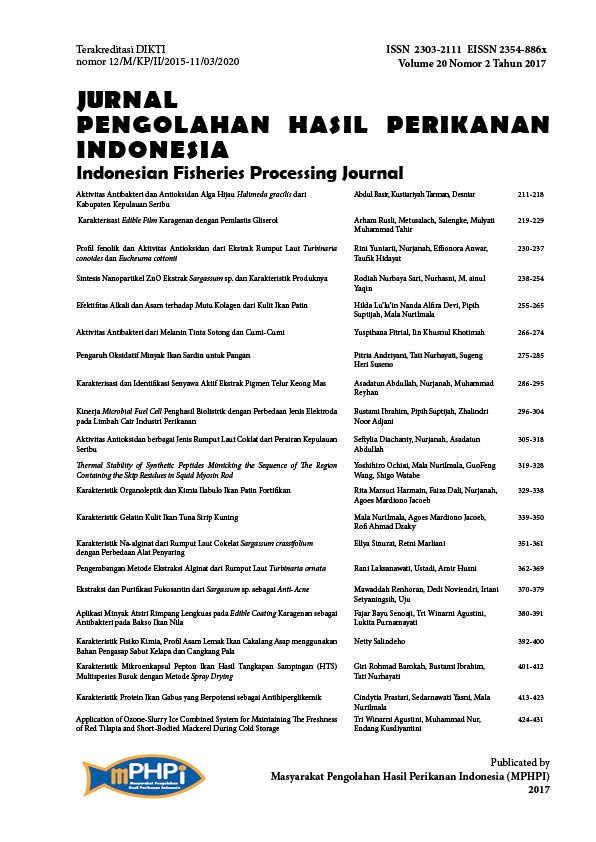Development of Alginate Extraction Method from Seaweed Turbinaria ornata
Abstract
Indonesia has a lot of high potential seaweed as a source of an alginate, but the extraction method had been used was not suitable. The aim of this research is to develop alginate extraction method from Turbinaria ornata seaweed with calcium method and compare the cost of extraction with an acid method as a control. In this research, various concentration of calcium chloride (CaCl2) was used in the separation of alginate from the extracted filtrate. The concentration of CaCl2 used varies from 0.50; 0.75; 1.00; 1.25; and 1.50 M. For comparison, alginate extraction with acid (control) method was used. Alginate quality parameters observed included alginate yield, product color degree, and gel viscosity. The results showed that the yield of alginate produced by calcium method was 36.89; 44.00; 56.00; 52.89 and 53.11% and for control 22.45%. From the degree of product color, CaCl2 concentration did not significantly affect the color of alginate but was darker when compared to the product extracted by the acid method. The viscosity of alginate produced by calcium method was 27,69; 26,57; 24.50; 22.41 and 19.92 cP while for control 32.88 cP. The extraction of Na-alginate with calcium method can decrease the need for Na-alginate extraction cost by 85% from the amount of Na-alginate extraction cost requirement by the acid method.
Authors
LaksanawatiR., UstadiU., & HusniA. (2017). Development of Alginate Extraction Method from Seaweed Turbinaria ornata. Jurnal Pengolahan Hasil Perikanan Indonesia, 20(2), 362-369. https://doi.org/10.17844/jphpi.v20i2.18104
Authors who publish with this journal agree to the following terms:
- Authors retain copyright and grant the journal right of first publication with the work simultaneously licensed under a Creative Commons Attribution License that allows others to share the work with an acknowledgement of the work's authorship and initial publication in this journal.
- Authors are able to enter into separate, additional contractual arrangements for the non-exclusive distribution of the journal's published version of the work (e.g., post it to an institutional repository or publish it in a book), with an acknowledgement of its initial publication in this journal.





